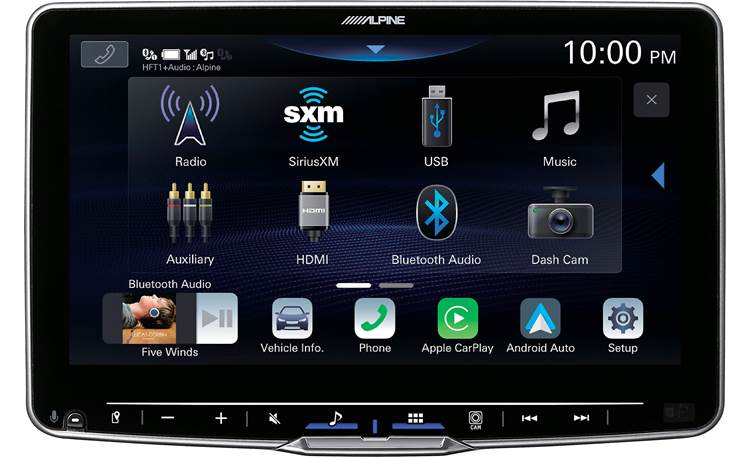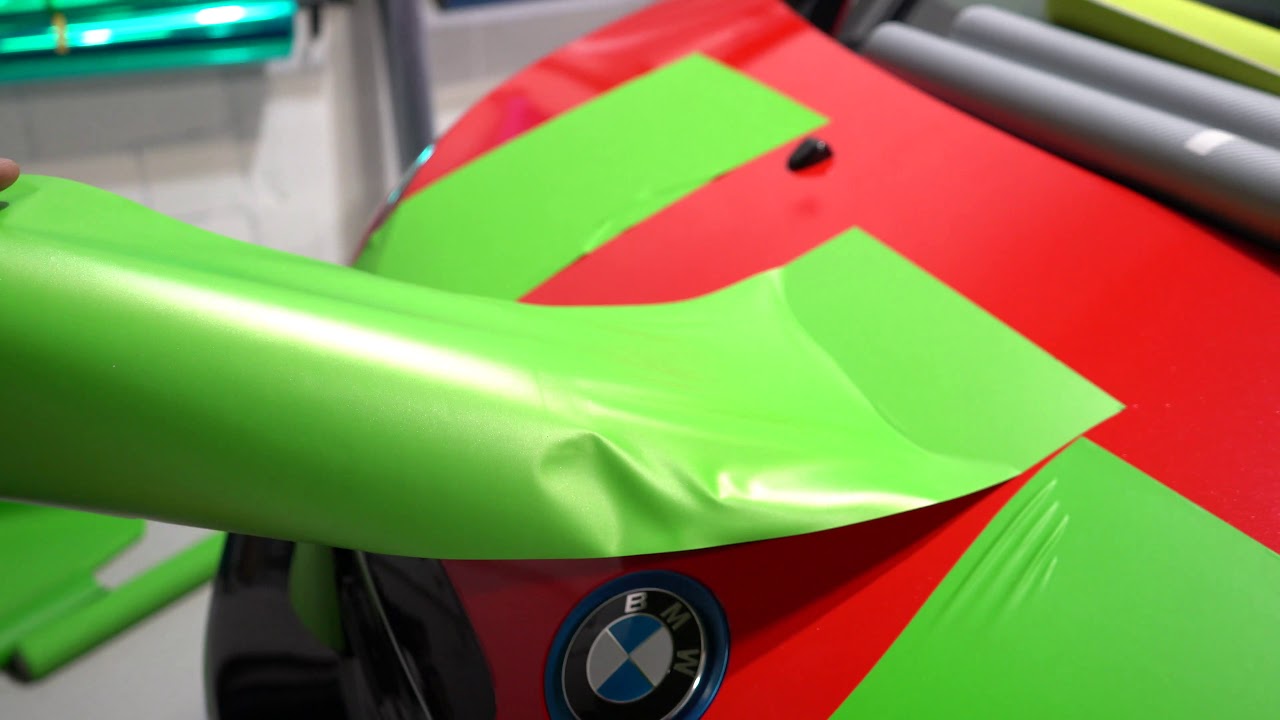Section 5: Finishing Options for the Dash Bezel
I'll apologize in advance - this section probably won't be as helpful as some were hoping. This is not going to be a how-to, but rather some insight into my thought process, and what led me to trying the vinyl wrap you've already seen.
There are quite a few options for finishing, only a couple of which are DIY friendly:
1. Paint (can be DIY friendly)
2. Hydro-dip (not really DIY friendly)
3. Real carbon fiber (definitely not DIY friendly)
4. Vinyl Wrap (DIY friendly)
Paint
The OEM soft touch coating is a type of paint, but unfortunately, it isn't something you can just find in a spray can. To date, I don't know of anyone that's been able to exactly replicate that rubberized finish, which is sad because it is actually a very nice coating, minus the durability. In the process of sanding it off of my original bezel, I noticed quite a few blemishes in the underlying plastic that that coating did a wonderful job of hiding. The finish is uniform, feels nice, and is a nice color. Someone somewhere knows how this is done, but they ain't talking. I get the feeling that it is something that would only be feasible for large production runs, and likely requires special equipment to lay it down uniformly. If you go down the double DIN route, you can kiss this finish goodbye, so keep that in mind before you go whipping out your Dremel.
Aside from the OEM coating, the sky's the limit for colors and sheens you can accomplish with paint. If I would have gone down this path, I would have had to spent a
lot more time prepping the pieces. You'd have to strip off all of the original coating, make sure the plastic filler was smoothed and feathered in perfectly, use some high build primer, sand some more, prime some more, sand some more, and then lay down your desired finish. That would have also delayed my project for a few months as I waited for the weather to warm up around here. Winter in Ohio is good for some things, but painting outdoors is not one of them, and I refuse to paint in my garage.
As I've already stated, I'll end up redoing the rest of my dash later on this year due to the original coating peeling off in a few spots. I will not be doing vinyl, because I think it would look way too busy, and also because it would be a royal PITA to wrap it. I'll likely end up using something from SEM, as I've had great luck with their paints in the past:
https://www.semproducts.com/product/...oattm-aerosols
Hydro-dip
This process goes by many names: water transfer printing, immersion printing, water transfer imaging, hydro-dipping, watermarbling, cubic printing, or hydrographics. This became popular many years ago, and lots of shops popped up trying to cash in on the process. You can read about it all over the internet, like here:
https://www.hydrocreations.com/blogs...-hydro-dipping
There are lots of options for designs and colors, so again, the sky's the limit. Once you know what to look for, you can pretty easily spot a hydro-dipped job.
I don't consider this to be a DIY option, so I dismissed it as an option for me. I could always go back and have this done sometime in the future if desired, but I'm not wild about how wavy some of the patterns are when placed on parts with curves (and both the bezel and shifter console qualify as curvy IMO).
Real Carbon Fiber
I would consider this the least DIY friendly finish, but probably one of the best looking IMO. Real carbon fiber has a depth that just can't be matched by anything else, but the process is labor intensive, and therefore expensive. I didn't want to have to worry about scratching it up during the install, or if I ever have to get back in there, which happens more often for me than I'd like because I can't leave stuff alone. Still, it's good stuff, and looks great if done well.
Vinyl Wrap
I ran across this thread many years ago:
https://www.viperclub.org/vca/thread...-think.661400/
My initial thought was that it looked pretty nice, and it might be worth doing to mine. Vinyl is very DIY friendly, and is also good at hiding imperfections, which is why I chose it. It is the quickest way to go from this:
You must be registered for see images attach
To this:
You must be registered for see images attach
...in a couple of hours, less if you've done it before. Yeah, it looks fake compared to real carbon fiber, but it has a nice texture, and the color also works well in this application.
I watched lots of different YouTube videos on the subject to get a general idea of what I was getting into. These two were helpful for me:
Start your side hustle here https://www.lifestyledreamers.com/In this video I show you what a pre cut kit looks like vs what it looks like when you "bulk" in...

www.youtube.com
For Exclusive new 4K Videos on disassembly and wrap installation visit https://www.ckwraps.comDemonstrating some characteristics of each brand when compared ...

www.youtube.com
Based on that along with a lot of other reading, I quickly realized that you get what you pay for when it comes to vinyl, and 3M and Vvivid are a couple of the most highly regarded films out there. Some of what sets them apart is the adhesive; the good stuff will have air channels that help you work any air bubbles out from under the wrap without constantly having to peel it back and lay it back down. That makes getting a nice, uniform finish a lot easier for a first timer like me.
I went with the 3M 2080 series (1080 is being phased out) black carbon fiber (CFS-12):
https://www.metrorestyling.com/3M-20...2080-cfs12.htm
They also make a grey-ish anthracite color (CFS-201):
https://www.metrorestyling.com/3M-20...080-cfs201.htm
And white (CFS-10)
https://www.metrorestyling.com/3M-20...2080-cfs10.htm
Vvivid's Epoxy Gloss Black Carbon also looks nice:
https://vvividshop.com/collections/c...s-black-carbon
My advice is to just pick something, and see if you like it. If you don't, you can just peel it up and try something else with fairly minimal effort. 3M states that their vinyl can be easily removed up to 3 years later, although I'm assuming at least some adhesive residue will be left behind.
The bezel above was literally the first part I've ever done, and that was my first attempt. Here are some tips that might help:
1. Use a good, SHARP knife - I had the best luck with an xacto type knife, like this:
https://www.target.com/p/fiskars-sof...E&gclsrc=aw.ds
2. You need a heat gun of some sort - could be an actual heat gun, could be a hair dryer. Be careful with a full blown heat gun - too much heat will melt the vinyl. The heat serves a couple purposes. The first is it allows you to stretch the material around curved surfaces (especially important on the shifter console); the second is that it can "reset" the vinyl after you stretch it. Vinyl has a memory, so if you overstretch it, just apply a little heat and it will go back to its original shape.
3. Take your time...this requires a lot of patience.
4. Order more than you need. I ordered a 24" wide by 5 foot long piece - that gave me enough to do both pieces, with enough left over that I was able to mess up one of the pieces (and I did).
5. The good stuff uses pressure sensitive adhesive, which will allow you to move/slide it around before you stick it down.
There's really not much to it, but I did struggle with the shifter console due to the curves (which is why I had to redo it). I was not able to get the vinyl to stretch down into the window switch area, which was a little disappointing, and going around the shifter bump-out on the driver's side was especially hard. I ended up having to use two pieces to make it work. Thankfully, it isn't something you ever really notice. This is where a more experienced installer would shine. IMO, vinyl is easy to do, but a little harder to master.
I also only pushed the wrap part way down into the recessed gauge areas, mostly because I knew they would be covered with my MGW aluminum trim rings. And in the "oh by the way" category, if you need to mess with those trim rings, you'll need this 1/4" 3M VHB double sided tape to stick them back down:
https://www.amazon.com/gp/product/B0...?ie=UTF8&psc=1
And now I'll leave you with some pics:
You must be registered for see images attach
You must be registered for see images attach
You must be registered for see images attach
You must be registered for see images attach



